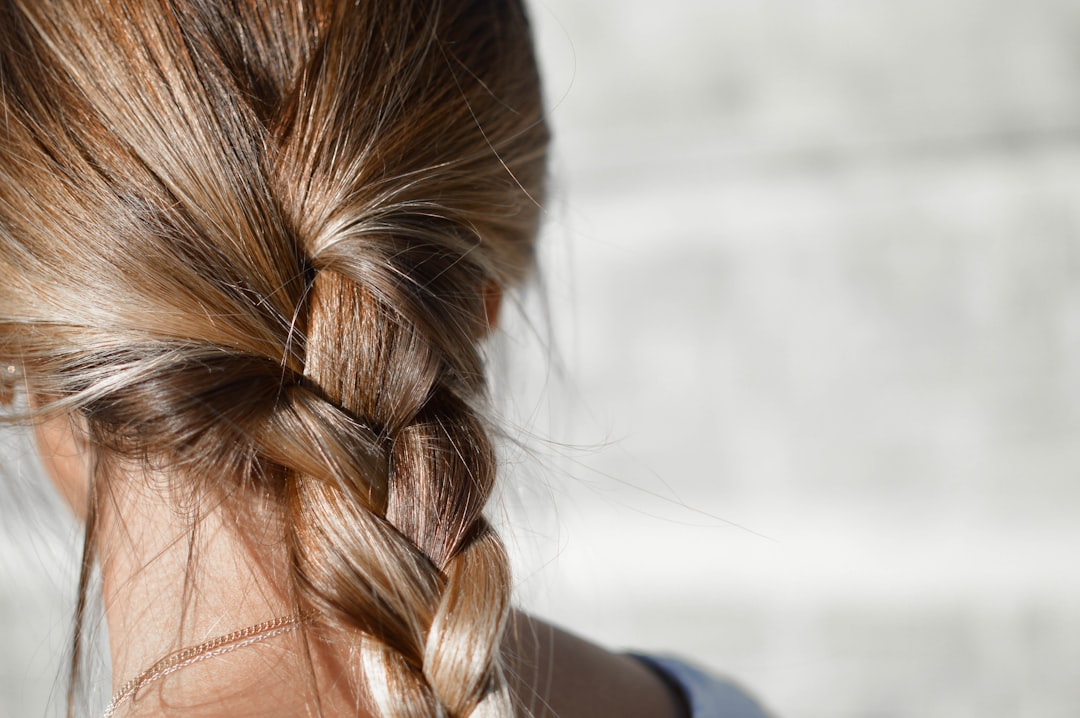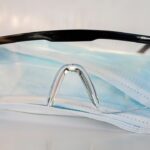When you consider laser hair removal, it’s essential to grasp how the process works. At its core, laser hair removal utilizes concentrated beams of light to target the pigment in hair follicles. This light energy is absorbed by the melanin in the hair, which then converts to heat, effectively damaging the follicle and inhibiting future hair growth.
The procedure is typically performed in a series of sessions, as hair grows in cycles, and not all hair is in the same growth phase at any given time. This means that multiple treatments are necessary to achieve optimal results. Before undergoing the procedure, you should consult with a qualified professional who can assess your skin type and hair color.
This assessment is crucial because the effectiveness of laser hair removal can vary based on these factors. For instance, individuals with light skin and dark hair tend to see the best results, as the contrast allows the laser to target the hair more effectively. During your consultation, you’ll also learn about the different types of lasers available and which one may be best suited for your needs.
Understanding this process will help you set realistic expectations and prepare for what lies ahead.
Key Takeaways
- Laser hair removal targets hair follicles to reduce hair growth
- Initial results may show reduced hair growth, but regrowth timeline varies
- Managing regrowth may require touch-up sessions for long-term results
- Hair texture and thickness may change after laser hair removal
- Potential irritation and ingrown hairs can be managed with proper care and exfoliation
- Supporting healthy armpit hair regrowth includes moisturizing and avoiding harsh products
- Consultation with a professional can provide personalized guidance for hair removal
- Embracing natural body hair is a personal choice and should be celebrated
Initial Results and Regrowth Timeline
After your first session of laser hair removal, you may notice some immediate changes. Initially, the treated area might appear slightly red or swollen, similar to a mild sunburn. However, this typically subsides within a few hours.
You might also observe that some hairs begin to shed within a week or two after treatment. This shedding is a positive sign that the laser has effectively targeted the follicles. It’s important to remember that while you may see some initial results, complete hair removal is a gradual process that requires patience.
As for regrowth, it’s common for some hair to return after your initial treatment. This regrowth can occur within a few weeks to a couple of months, depending on your individual hair growth cycle. However, many people find that the regrown hair is finer and lighter than before.
Over time, with continued treatments, you should notice a significant reduction in hair density and thickness. The timeline for achieving your desired results can vary widely from person to person, but most individuals require multiple sessions spaced several weeks apart to achieve optimal outcomes.
Managing and Maintaining Regrowth
Once you’ve completed your laser hair removal sessions, managing any regrowth becomes an important aspect of your post-treatment care. While many people experience a significant reduction in hair growth, some may still notice occasional hairs returning. It’s essential to approach this regrowth with a plan that aligns with your personal preferences and comfort levels.
For instance, you might choose to continue with maintenance sessions every few months to keep any stray hairs at bay. In addition to scheduling follow-up treatments, you can also explore other hair removal methods for any regrowth that occurs between sessions. Options such as shaving or using depilatory creams can be effective for managing any unwanted hair without interfering with the results of your laser treatments.
However, it’s crucial to avoid methods like waxing or plucking, as these can disrupt the hair follicle and hinder the effectiveness of future laser sessions. By developing a comprehensive strategy for managing regrowth, you can maintain smooth skin while enjoying the benefits of laser hair removal.
Potential Changes in Hair Texture and Thickness
| Factors | Potential Changes |
|---|---|
| Diet | Increased protein intake may lead to thicker hair |
| Hormonal Changes | Puberty, pregnancy, and menopause can affect hair texture |
| Stress | High stress levels may lead to hair thinning |
| Genetics | Family history can influence hair texture and thickness |
One of the fascinating aspects of laser hair removal is its potential impact on the texture and thickness of regrown hair. Many individuals report that after undergoing several sessions, any hair that does return tends to be softer and finer than before. This change can be attributed to the damage inflicted on the hair follicles during treatment, which alters their ability to produce thick, coarse hair.
As a result, you may find that your skin feels smoother and more refined over time. However, it’s important to note that individual experiences can vary widely. Some people may not notice significant changes in hair texture or thickness, while others may find that their regrown hair is still relatively coarse.
Factors such as genetics, hormonal changes, and skin type can all play a role in how your body responds to laser treatments. Regardless of these variations, many individuals appreciate the overall reduction in hair density and the improved feel of their skin after completing their laser hair removal journey.
Addressing Potential Irritation and Ingrown Hairs
While laser hair removal is generally considered safe, some individuals may experience irritation or discomfort following their sessions. Common side effects include redness, swelling, or mild itching in the treated area. These symptoms usually resolve quickly but can be bothersome in the meantime.
To alleviate any discomfort, applying a soothing aloe vera gel or cold compress can provide relief and help calm the skin. Ingrown hairs are another concern that some individuals face after laser treatments. These occur when hairs grow back into the skin instead of emerging from the follicle, leading to bumps or irritation.
To minimize the risk of ingrown hairs, it’s essential to keep your skin exfoliated and moisturized. Regularly using gentle exfoliating scrubs or chemical exfoliants can help prevent dead skin cells from clogging pores and trapping hairs beneath the surface. If you do experience ingrown hairs, avoid picking at them; instead, consider using topical treatments designed to reduce inflammation and promote healing.
Tips for Supporting Healthy Armpit Hair Regrowth

If you’re focusing on armpit hair regrowth after laser treatments or simply want to support healthy growth in this area, there are several strategies you can implement. First and foremost, maintaining a balanced diet rich in vitamins and minerals is crucial for promoting healthy hair growth. Nutrients such as biotin, zinc, and vitamins A and E play vital roles in supporting follicle health and encouraging robust growth.
In addition to dietary considerations, practicing good hygiene is essential for maintaining healthy armpit hair. Regularly cleansing the area helps remove sweat and bacteria that can contribute to irritation or infection.
Consultation with a Professional for Further Guidance
As you navigate your journey with laser hair removal and subsequent regrowth management, consulting with a professional can provide invaluable insights tailored to your specific needs. A licensed practitioner can assess your progress and offer personalized recommendations based on your unique skin type and hair characteristics. They can also help you determine whether additional laser sessions are necessary or if alternative methods might be more suitable for managing any regrowth.
Moreover, professionals can address any concerns you may have regarding potential side effects or changes in your skin’s appearance post-treatment. They can guide you on best practices for caring for your skin during this transitional phase and suggest products that may enhance your results. By seeking expert advice, you empower yourself with knowledge and support that can significantly enhance your experience with laser hair removal.
Embracing and Celebrating Natural Body Hair
In a world where societal standards often dictate beauty norms, embracing natural body hair can be a powerful act of self-acceptance and empowerment. Whether you choose to remove body hair through methods like laser treatments or decide to let it grow freely, celebrating your choices is essential for fostering a positive body image. Recognizing that body hair is a natural part of human anatomy allows you to appreciate your uniqueness rather than conforming to external pressures.
Engaging in conversations about body positivity and self-acceptance can also help shift societal perceptions surrounding body hair. By sharing your experiences and choices with others, you contribute to a broader dialogue that encourages individuals to embrace their bodies as they are—hairy or not. Ultimately, whether you opt for smooth skin or choose to celebrate your natural body hair, what matters most is that you feel confident and comfortable in your own skin.
Embracing your choices empowers not only yourself but also those around you to appreciate their bodies authentically.
If you are curious about laser hair removal and its effects on armpit hair, you may also be interested in learning about the latest fashion trends related to hair removal. Check out this article on Fashion Trends in Hair Removal to stay up to date on the latest styles and techniques.
FAQs
What is laser hair removal?
Laser hair removal is a cosmetic procedure that uses a concentrated beam of light (laser) to remove unwanted hair. The laser targets the pigment in the hair follicles, damaging them and inhibiting future hair growth.
Does armpit hair grow back after laser hair removal?
In most cases, armpit hair will grow back after laser hair removal, but it may be finer and lighter in color. Multiple sessions of laser hair removal are usually required to achieve long-term hair reduction.
How many sessions of laser hair removal are needed for armpit hair?
The number of sessions needed for laser hair removal varies from person to person, but most individuals require 6-8 sessions spaced several weeks apart to achieve optimal results for armpit hair removal.
Is laser hair removal permanent for armpit hair?
Laser hair removal can lead to long-term hair reduction, but it is not always permanent. Some individuals may experience regrowth of armpit hair over time, although it is typically finer and lighter in color.
Are there any risks or side effects associated with laser hair removal for armpit hair?
Common side effects of laser hair removal for armpit hair may include temporary redness, swelling, and discomfort in the treated area. In rare cases, there may be changes in skin pigmentation or scarring. It is important to consult with a qualified and experienced practitioner to minimize risks.







